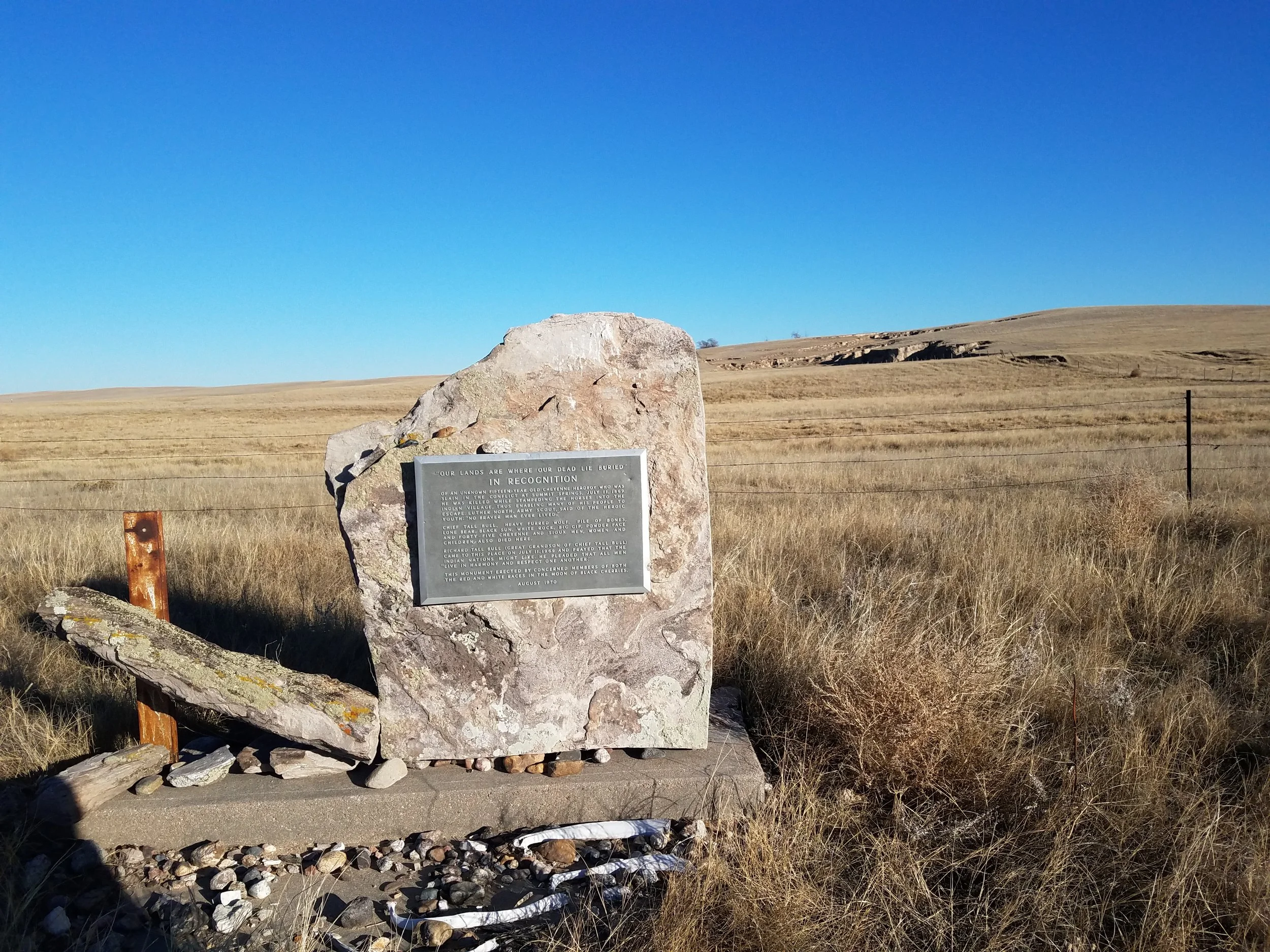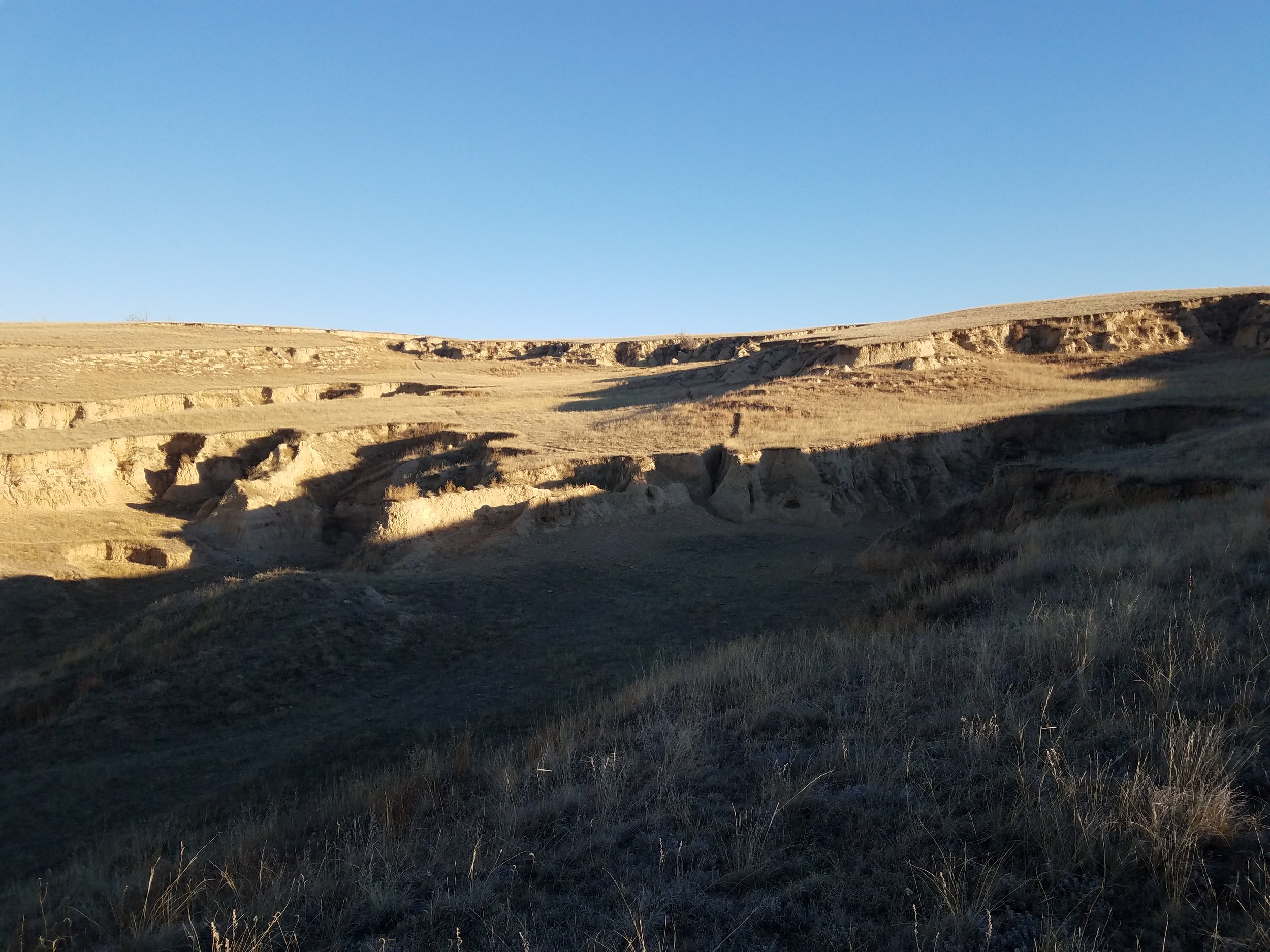Battle site at Summit Springs, Sterling Colorado. // Emily Lovell
By: Emily Lovell, Associate Editor
About fourteen miles southeast of Sterling, CO, near the Logan/Washington county line, you can visit the battleground site of Summit Springs, the last Native American conflict in Colorado. Just make sure you get permission from the landowner as it is located on private property. Today, the site looks like ordinary grazing land if not for the monuments ensuring that the battle that took place 150 years ago is not forgotten.
Six weeks before the battle of Summit Springs, on May 30, 1869, Cheyenne dog soldiers pillaged homesteads near present-day Lincoln, Kansas. Two women, Susanna Alderdice and Maria Weichel, were taken captive. Thirteen white settlers were killed including Maria’s husband and three of Susanna’s four children. Miraculously, Alderdice’s four-year old son Willis survived even though his injuries included five arrows in the back. Sadly, he would never be reunited with his mother.
The incident prompted Major Eugene A. Carr to lead the 5th U. S. Calvary and a battalion of Pawnee scouts under Major Frank North on a campaign to rid the Republican River Territory of Native Americans. They set out from Fort McPherson in Nebraska and would not encounter the Native Americans until July 8 when Cheyenne dog soldiers attempted to steal some of the company’s horses during a midnight raid.
Once Chief Tall Bull realized his people, numbering up to 450, were camped in close proximity to an army now aware of their nearby presence, he had his people branch out in three separate directions. Gradually, they would come back together and disperse once again braiding trails in the grassland that served to confuse their pursuers. This evasive strategy had successfully worked for Tall Bull in the past, but now it failed him.
The Pawnee scouts with Carr correctly guessed that he was aiming for the South Platte River and caught up with him on July 11, 1869. Tall Bull and his people had arrived on its banks the previous day, but confident that they had left their pursuers far behind – and in order to give the women, children, and elderly a chance to rest – he set up camp in the bluffs before fording the river. Some sources say that instead of being tied to their owner’s tipis, most horses were pastured away from camp and that the morning of July 11 was foggy. Both of these factors delayed their river crossing and Carr launched his assault that afternoon around 3:00. The attack caught the Native Americans by surprise.
A fifteen-year old Cheyenne herd boy bravely stampeded the pastured horses into the camp which enabled many of his people to escape, but he was killed during the assault. Some of the women and children took refuge in a nearby ravine while warriors tried to protect them. Tall Bull died defending his people as did Heavy Furred Wolf, who was perhaps the last Cheyenne Dog Soldier to stake his dog rope.
Dog ropes were made out of rawhide leather and decorated with porcupine quills and feathers. One end was tied to a red wooden picket-pin. Only the bravest warriors carried dog ropes. During combat, a Cheyenne warrior would put the pin in the ground as a sign of perseverance and standing one’s ground. They area over which the dog soldiers could fight was limited to the length of the rope. Dog soldiers could not remove the pin until their people had safely retreated or a comrade removed it, so it was used as a last resort.
At the battle’s end, 52 Cheyenne and Lakota had been killed, 17 women and children had been captured, 418 horses and mules were gained, and up to 84 lodges were burned to the ground. Susanna Alderdice was the only non-Indian casualty killed by a tomahawk strike to the face during the battle. William F. Cody, a.k.a. Buffalo Bill, fought as a scout in the battle, and a re-enactment of the Battle of Summit Springs was frequently featured in his Wild West Show.


